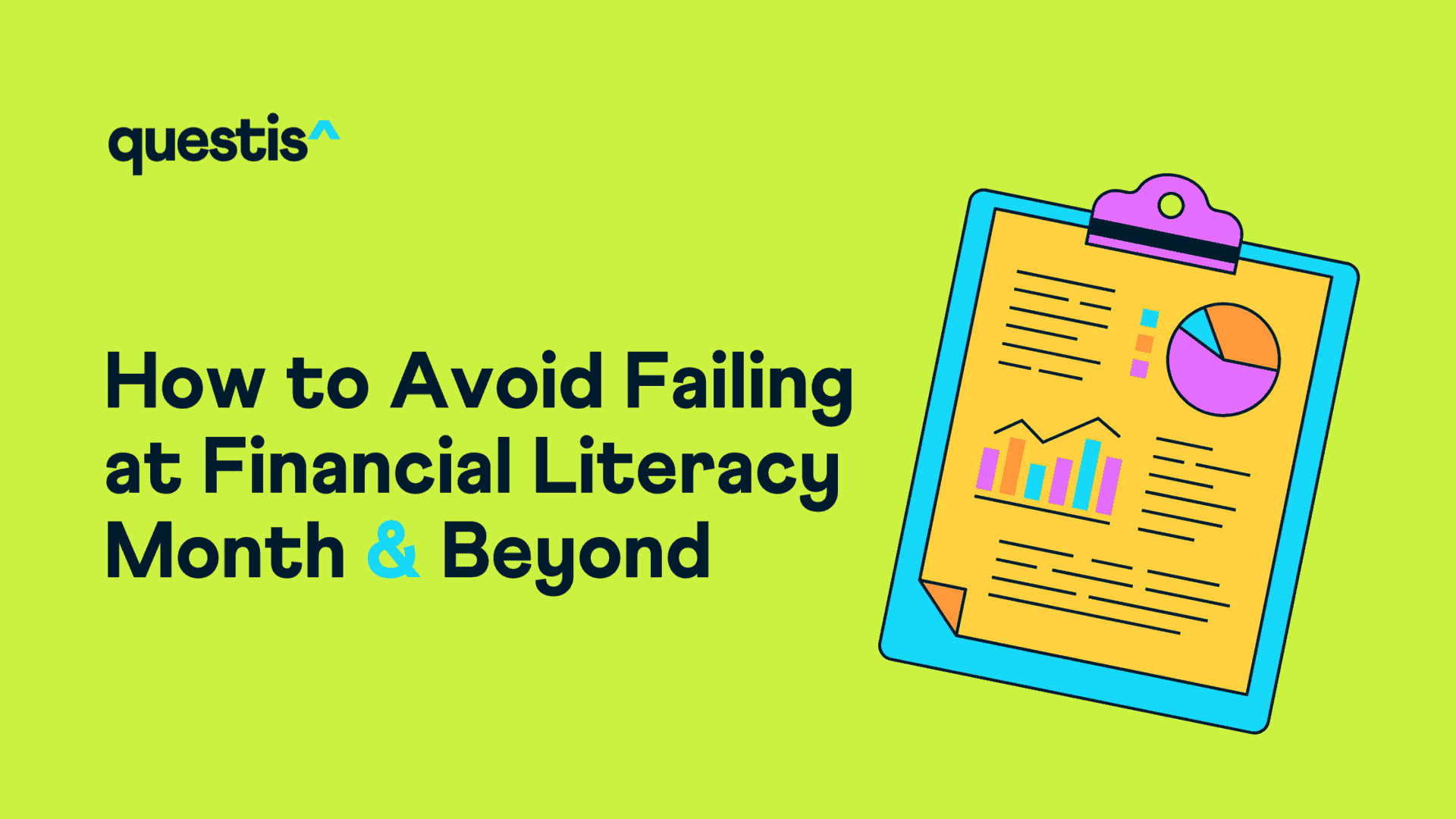April is Financial Literacy Awareness Month, and most employers are starting with an automatic grade of F. Read on if you don’t want to be one of them.
The United States is one of the world’s most prosperous countries, yet nearly two-thirds of Americans live paycheck to paycheck. Making six figures used to be a marker of success in this country, but even 48% of six-figure earners live paycheck to paycheck. Why? Because financial literacy has yet to be taken seriously or taught inclusively.
But it doesn’t have to be this way — and leading employers (we’re looking at you) can be part of the change.
Before explaining how this change should occur, let’s shine a spotlight on why it’s needed. Somehow, employers still ask, “Why are we responsible for teaching our employees about money?!” The simple answer is that if you don’t educate your employees, then YOU will lose money. Financially stressed employees (aka most of them) bring their financial woes into the workplace, affecting everything from productivity to engagement to retention.
The bottom line is that financial literacy affects your bottom line.
The good news is that it’s not too late to avoid failure. In a recent white paper, Dr. Martha Brown Menard, Ph.D., behavioral research scientist and Director of Financial Coaching for Questis, outlined how employers can improve employee outcomes and get better at financial education.
Below are five takeaways from the white paper to help your company improve your grade to an A.
- Opt out of one-off education and opt in to continuity
Tempted to offer ad hoc financial wellness workshops so you can check a box? Don’t. According to economist Annamaria Lusardi of the George Washington University School of Business, one-time financial education is unlikely to change long-term habits and decision-making. Instead, consider financial literacy options that have accountability built into them.
As Menard notes, “Having some type of reminder or personal accountability feature that can be enabled or disabled as desired is helpful for keeping goals and action steps in the forefront of employees’ minds.”
- Replace one-size-fits-all solutions with custom solutions
Despite wage equality efforts over the last few decades, shows that women and people of color continue to earn less than white men for the same work. These systemic disadvantages, especially when paired with longer lifespans, result in the average woman needing to save 18% of her income to have the same retirement savings as a man working at the same job who saves only 10%. Women of color face an even greater burden and would need to save 38%.
Although easier to implement, one-size-fits-all solutions don’t support everyone; they barely support a few. Providing customizable solutions tailored to each individual’s diverse economic circumstances is a must.
- Upgrade from financial advice to financial coaching
Some employers point to their 401k provider’s financial advice and think that’s not enough. But traditional financial advice doesn’t nearly go far enough, much less cover all the other factors that affect financial health outside of retirement. By contrast, financial coaching “focuses on allowing client-centered goals to guide the process, rather than only providing formulaic expert advice or telling individuals what they ‘should’ do,” writes Menard.
She points to a meta-analysis of three financial coaching programs. The randomized controlled trials found positive associations between coaching and behavioral outcomes, including goal formation, confidence, budgeting, and saving. (Nice!)
- Forget fixed support and offer flexible support
Some financial wellness plans offer breezy listicles, online calculators, and hyped-up videos. But what really makes a difference is flexible access to a (real) human. Choose a solution that guarantees access to a financial coach by phone, chat, email, or in person. Financial literacy goes much further with this level of accountability, and employees are more likely to use benefits that fit into their schedules.
Think about it. What’s more helpful: A) reading about your symptoms on WebMD in the middle of the night or B) using a Teladoc service in the middle of the night? We’re pretty sure the answer is obvious.
- Skip the humility and feel free to brag about your benefits
Last, but definitely not least, don’t forget to tell your employees about your financial benefits. No matter how good your financial literacy program is, no one benefits when they don’t know it exists. And if you want to impress your workforce, show them how you’ve listened to their needs. Part of your communication can include explaining why you invested in financial literacy and what challenges you hope the program will solve. Help your employees feel heard by showing them what offerings are available.
Raise your team’s financial literacy score by working with Questis. We will help uncover the root causes of your workforce’s financial stress — and help fix it — so that you can put your focus where it’s needed most. You can study how to raise your score in our white paper or speed it up by getting in touch.
